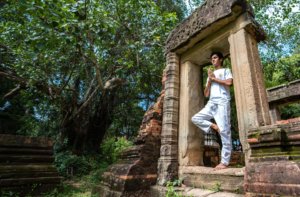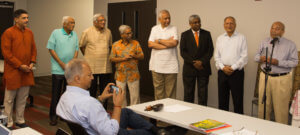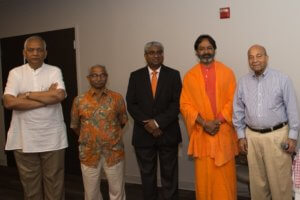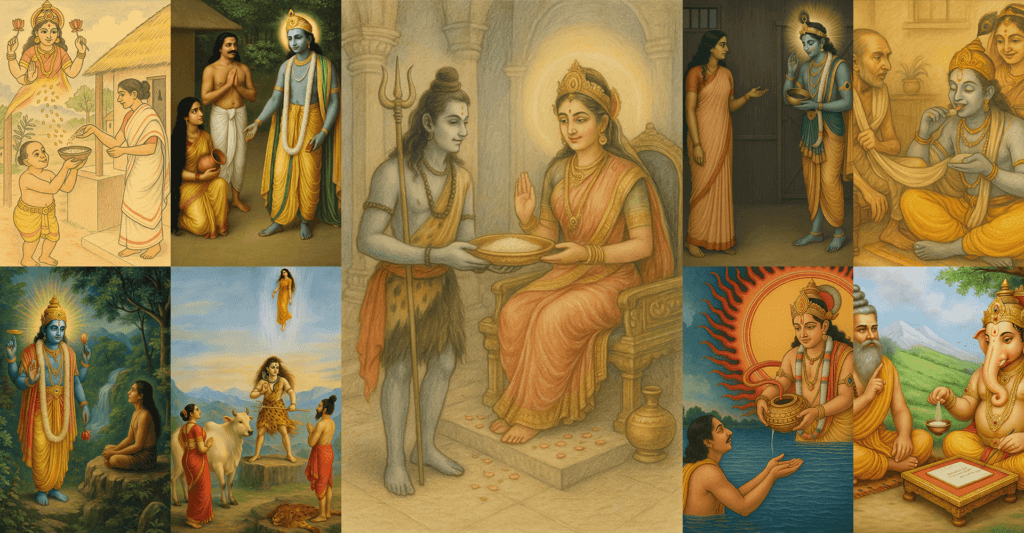
Akṣayyatṛtīyā is a Hindu festival with deep roots in multiple Hindu and Jain scriptures. It finds mention in many Purāṇas, and has some very interesting stories associated with it. According to the Hindu tradition, it is observed on Vaiśākha-śukla-tṛtīyā or the third day of the bright half of the month of Viśākha, which this year occurs on April 29, 2025 in first paragraph last line.
The oldest reference to Akṣayyatṛtīyā is believed to be from Viṣṇudharmasūtra with an emphasis on the worship of Viṣṇu, on fasting, oblations with whole grains and donating the grains.
वैशाखशुक्लतृतीयायाम् उपोषितः अक्षतैः वासुदेवमभ्यर्च्य तानेव हुत्वा दत्वा च सर्वपापेभ्यः पूतो भवति ।
यच्च तस्मिन्नहनि प्रयच्छति तत् अक्षय्यम् आप्नोति ।
On the bright third day of Vaiśākha, he who fasts, worships Vasudeva with unbroken grains, offers oblations, and donates, he becomes purified of all sins. Whatever is given on this day, it becomes inexhaustible.
Matsyapurāṇa reiterates the importance of fasting, sacrifice and donating. As per the Bhaviśyapurāṇa, Satayuga, Tretayuga and Kaliyuga began on Akṣayyatṛtīyā. It is said to be one of the sarva-siddhi-muhūrtas, and any task undertaken on this day is sure to be a success. In Bhaviśyapurāṇa Śrīkṛṣṇa himself says:
श्रीकृष्ण उवाच ।
बहुनात्र किमुक्तेन किं बह्वक्षरमालया ।
वैशाखस्य सितामेकां तृतीयां शृणु पाण्डव ॥ ४०:३०:१ ॥
स्नानं दानं जपो होमः स्वाध्यायः पितृतर्पणम् ।
यदस्यां क्रियते किञ्चित्सर्वं स्यात्तदिहाक्ष यम् ॥ २ ॥
आदौ कृतयुगस्येयं युगादिस्तेन कथ्यते ।
सर्वपापप्रशमनी सर्वसौख्यप्रदायिनी ॥ ३ ॥
Śrīkṛṣṇa uvāca |
bahunātra kimuktena kiṃ bahvakṣaramālayā |
vaiśākhasya sitāmekāṃ tṛtīyāṃ śṛṇu pāṇḍava || 4:30:1 ||
snānaṃ dānaṃ japo homaḥ svādhyāyaḥ pitṛtarpaṇam |
yadasyāṃ kriyate kiñcitsarvaṃ syāttadihākṣa yam || 2 ||
ādau kṛtayugasyeyaṃ yugādistena kathyate |
sarvapāpapraśamanī sarvasaukhyapradāyinī || 3 ||
Śrīkṛṣṇa said:
What need is there to say much here, or why use many words? Listen, O Pandava, to the one important thing about the bright third day of Vaiśākha.
Bathing, charity, chanting, fire sacrifice, scriptural study, and offering to ancestors – whatever is done here in these respects, all that becomes imperishable.
This is considered the beginning of the Krita Yuga, therefore it is called the start of the Yuga. It alleviates all sins and grants all happiness.
As per various purāṇas, Śrī Mahāviṣṇu took the avatāra of Matsya, Hayagriva, Kūrma, Varaha, Nṛsimha and Paraśurāma avatāras in this day. Hence Paraśurāma jayanti is observed on this day too.
The Stories:
Akṣayyatṛtīyā is associated with many incidents narrated in the our Itihāsa purāṇas.
1. Ganeśa Writes Mahābhārata:
Akṣayyatṛtīyā is believed to be the day on which Mahābhārata was written. Some traditions hold that this auspicious day is when Ṛṣī Vyāsa dictated the Mahābhārata to Bhagavān Gaṇeśa, his scribe for this endeavor.
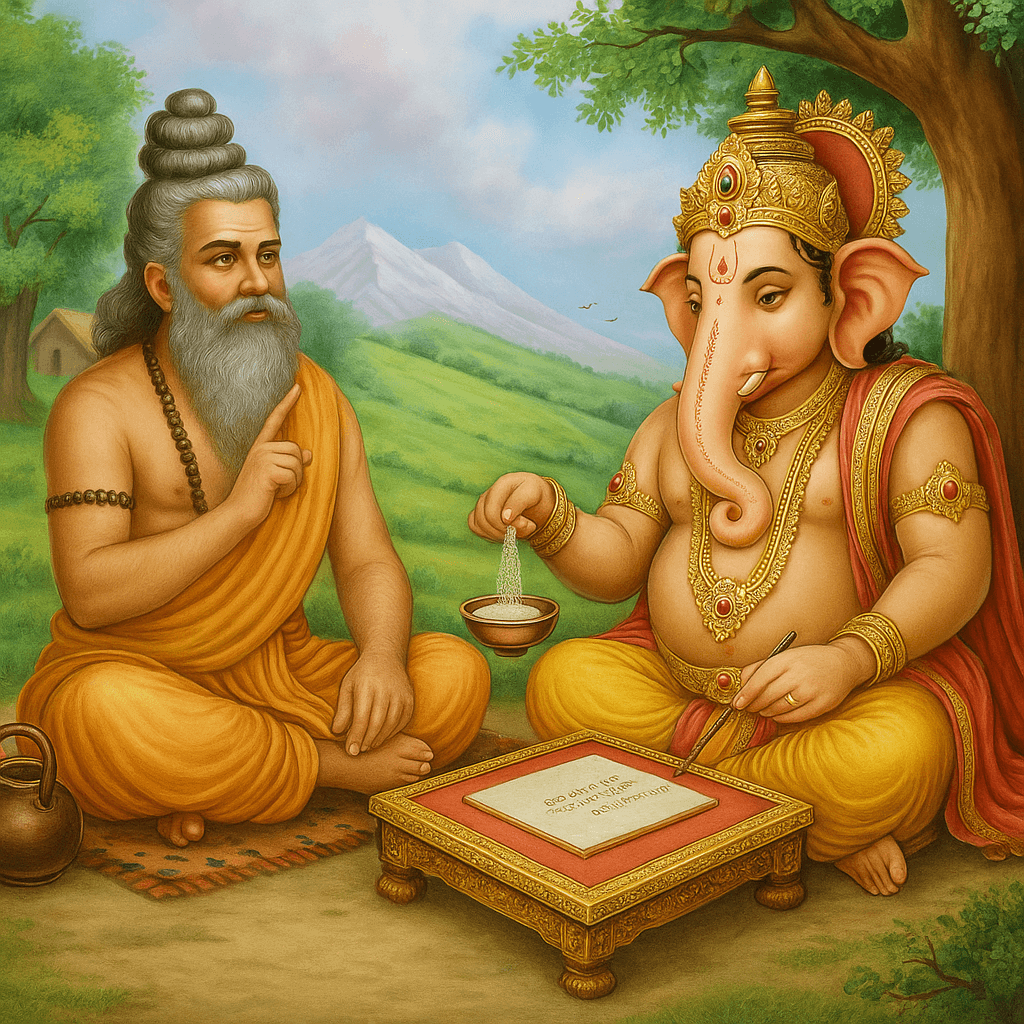
2. Yudhisthira Receives Aksayapātra:
Another Mahābhārata sanniveśa linked with Akṣayyatṛtīyā unfolds in the Vana-parva. As the Pāṇḍavas embarked on their vanavāsa, a multitude of citizens from Indraprastha, along with ṛṣīs, sādhus, and wise men, chose to accompany them. Despite Yudhiṣṭhira’s efforts to dissuade them, they remained steadfast. According to dharma, these individuals were subjects of King Yudhiṣṭhira, thus compelling him to ensure their well-being.
Nāradamuni visited King Yudhiṣṭhira, who expressed his concern over his inability to fulfill his kingly duties due to insufficient resources to feed his entourage. Nārada muni suggested seeking counsel from the Pāṇḍava family priest, Ṛṣī Dhaumya. Yudhiṣṭhira followed this advice, and Ṛṣī Dhaumya imparted to him the 108 names of Āditya (the Sun God), passed down from Indra. He instructed the Kuru King to beseech the Sun.
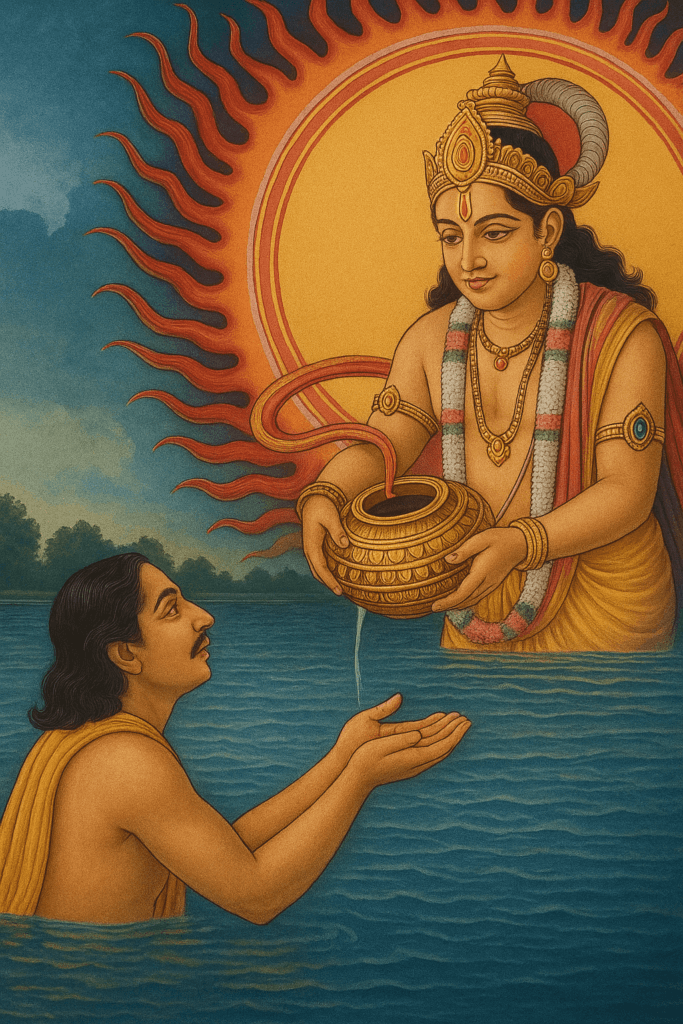
Ṛṣī Dhaumya elucidated to Dharmarāja how the Sun sustains all life forms in the food chain, underscoring the significance of honoring the Sun. From seeds to living-breathing animals, the Sun is the ultimate source of sustenance of all. Hence, offering reverence to the Sun would alleviate their food crisis.
Yudhiṣṭhira bathes in the river and earnesting worships the Sun God. Pleased with his piety, Sūrya gives him akṣayapātra, a miraculous vessel with an inexhaustible supply of four types of food – seeds, fruits, roots, and meat. Sūrya Bhagavān assured that the Pāṇḍava king would be sustained for 14 years without worry. Yudhiṣṭhira entrusted the akṣayapātra to his queen, who skillfully prepared and served food to all present.
3. Draupadi – Śri Krsna Story:
The subsequent tale features the Pāṇḍava Queen Draupadi and Bhagavān Śri Kṛṣṇa. One day, Ṛṣī Durvāsa, accompanied by his retinue, happened to pass by the forest where the Pāṇḍavas were residing during their vanavāsa and decided to pay them a visit. However, the Pāṇḍava princes were away foraging, leaving only Queen Draupadi at home. Draupadi, as a Kuru queen, was compelled to extend hospitality to the revered sage and invite him for a meal. Unfortunately, there was no food available in the hut at the time.
In a bid to stall, Draupadi requested the sages to refresh themselves with a bath while she prepared the meal. She prays to Kṛṣṇa for help and cognizant of the situation, he intervened. He arrived at her doorstep and insisted that Draupadi serve him immediately. Draupadi, recognizing Śri Kṛṣṇa’s divine nature, surrendered to him with devotion, and complied. Searching the hut, she found only a single grain of rice remaining in a pot. With humility and reverence, she offered this grain to Devakinandana. Madhusūdhana consumed it, and instantly, not only the sages but the entire universe felt satiated.
The sages, led by Durvāsa muni, then approached Draupadi and conveyed that they were full, expressing regret for being unable to partake of her hospitality. Thus, the single grain of rice offered by Draupadi to Govinda multiplied manifold, nourishing the entire world. This legendary incident is said to have occurred on Akṣayyatṛtīyā.
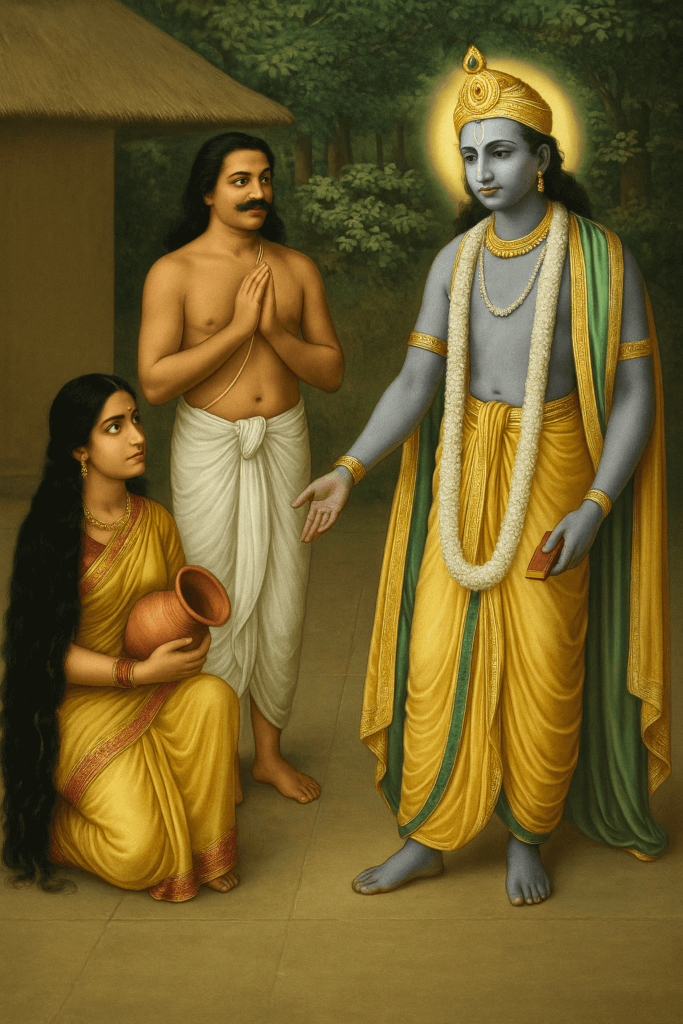
4. Krsna and Sudāma Tale:
Another tale linked to Akṣayyatṛtīyā is a Harikatha from the Śrimad Bhāgavata Purāṇa. In their youth, Śrī Kṛṣṇa and Sudāma were disciples at Ṛṣī Sāndipani’s hermitage. In later life, facing financial struggles and upon his wife’s urging, Sudāma visited Kṛṣṇa. Carrying only flattened rice as a gift, Sudāma hesitated to offer it to the Lord. However, Kṛṣṇa, understanding his friend’s heart, graciously accepted the humble offering. With each morsel that Śrī Kṛṣṇa ate, Sudāma received boundless wealth through divine grace.
This divine exchange, symbolizing the magnitude of sakha-bhakti (devotion to Bhagawān as a friend) and daiva-kṛpa (divine benevolence), occurred on the auspicious day of Akṣayyatṛtīyā.
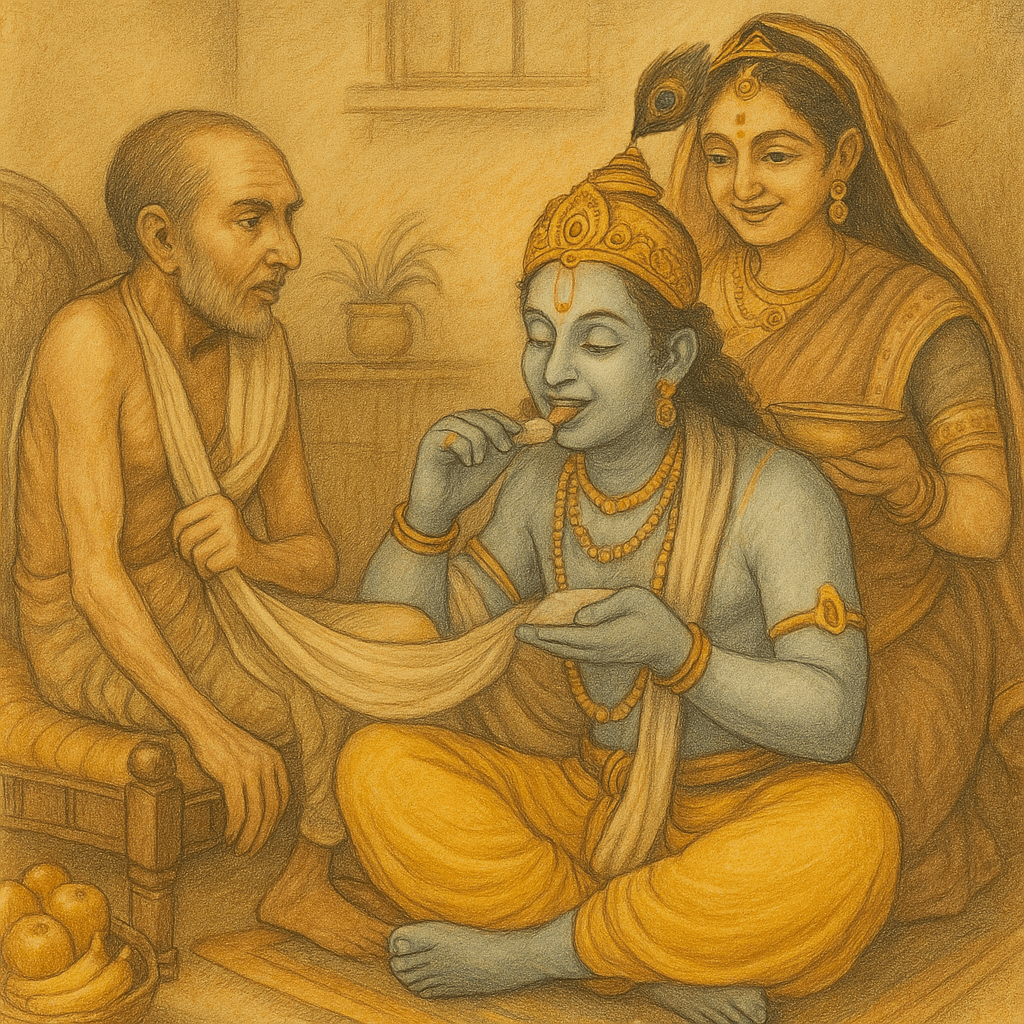
5. Annapūrnā and Bhagavān Śiva’s Tale:
Another significant tale involves Goddess Annapūrṇā and Bhagavān Śiva’s quest for food. Śiva, known for his asceticism, rejected all material possessions, including food. Understanding the importance of sustenance, especially food, Goddess Pārvati decided to enlighten him. She withdrew all material wealth from the earth, causing widespread famine. There was chaos in the world due to hunger. Faced with the plight of his devotees, Śiva realized his oversight and sought sustenance for them. Searching the entire world, he found food only in Kāśi. Pārvati as Goddess Annapūrṇā, who graciously provided food to all upon Mahādeva’s request.
This narrative underscores the importance of the material world and highlights the role of women, particularly Goddess Annapūrṇā, in providing sustenance. It also imparts lessons in humility and the significance of food for sustenance.
As a result of this legend, many regions in India observe the ritual of sowing paddy or rice on Akṣayyatṛtīyā, marking the beginning of the summer crop.
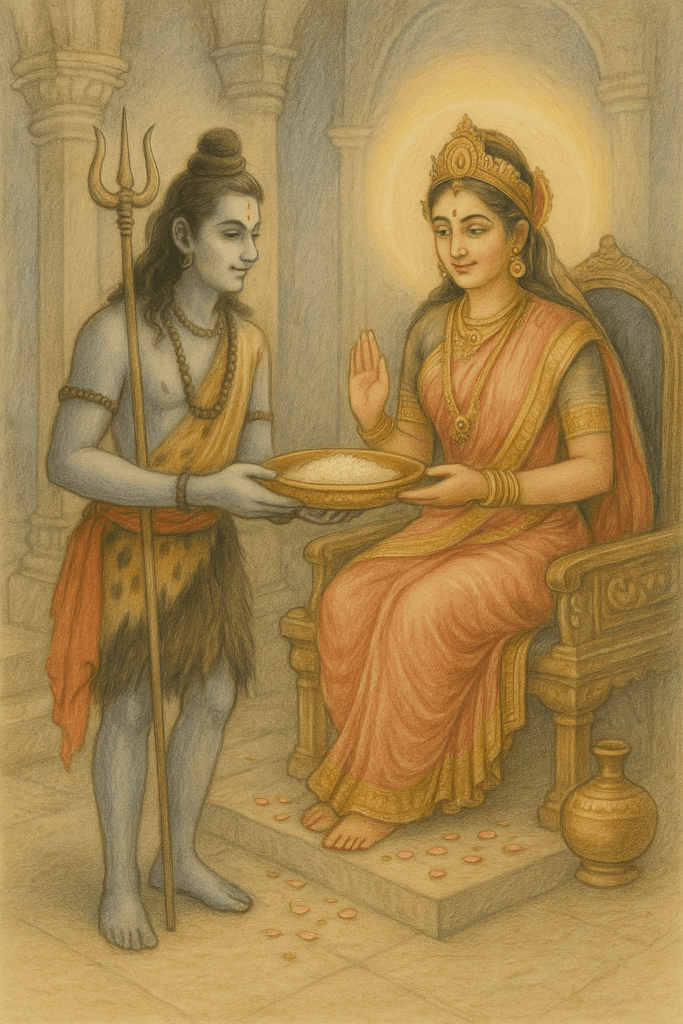
6. Gangā Avatarana:
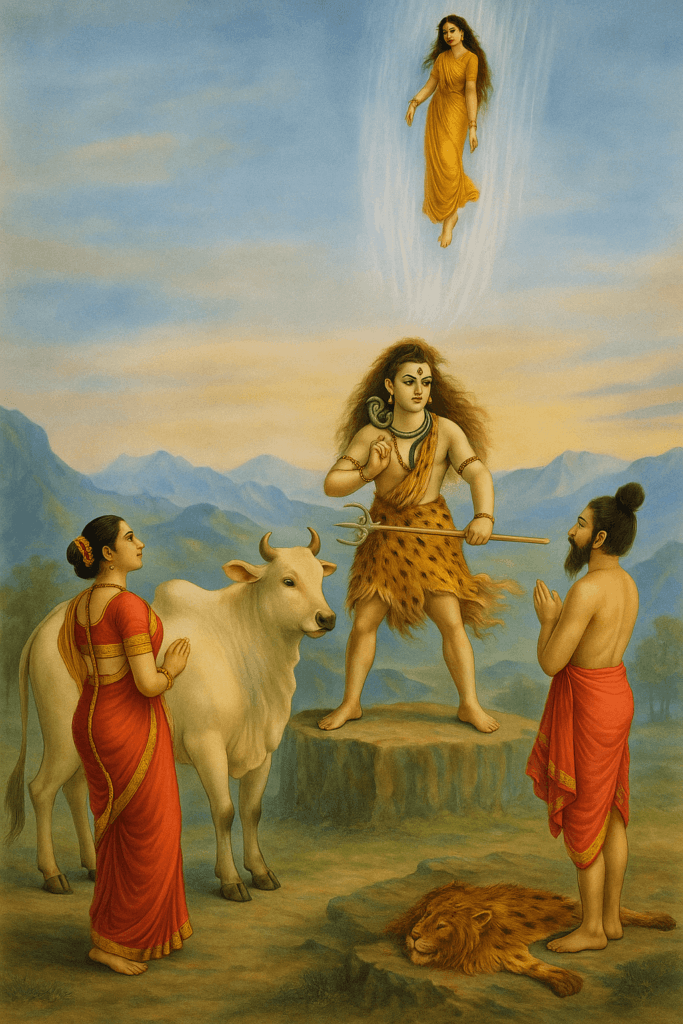
Another significant lore found in many Itihāsa-Purāṇas recounts the descent of the river Gaṅgā to earth. Ṛṣī Kapila’s meditation was disrupted by King Sāgara’s 60,000 sons, whom he subsequently incinerated with his gaze. The only
means of their restoration lay in the healing powers of Gaṅgā, who was then residing in svargaloka. King Bhagiratha, a descendant of Sāgara, undertook rigorous penance to persuade Gaṅgā to descend to earth. However, her fall posed a threat to the planet’s stability. To mitigate this, King Bhagiratha prayed to Śiva, who consented to break Gaṅgā’s fall with his matted hair. Thus, on the auspicious day of Akṣayyatṛtīyā, Gaṅgā descended to earth and revived all 60,000 ancestors of Bhagiratha, thereafter came to be known as Bhāgīrathī.
7. Ādiśankarācharya Composed Kanakdhāra Stotram:
It is traditionally believed that in the 8th century CE, Ādiśankarāchārya composed the Kanakadhāra strotram on the day of Akṣayyatṛtīyā. The story goes that when he was 8 years old, he once went for Bhikashatana. He went to a poor brahmin woman’s home to beg for alms. She did not have anything and gave Adishankaraacharyan the lone Indian gooseberry that she had for food. Seeing her generosity despite her poverty, the 8 years old Shankara composed and sang the Kanakadhara Stotram in the praise of Goddess lakshmi. At the end of his stuti, the Goddess appeared and offered him a boon. Adi shankaracharya is said to have requested Goddess lakshmi to give wealth to the poor brahmin woman. Immediately there was a shower of gold coins (Kanka+Dhaara) in front of that lady’s house.
It is believed that chanting this stotram make Goddess Lakshmi happy and brings wealth and prosperity to the home.
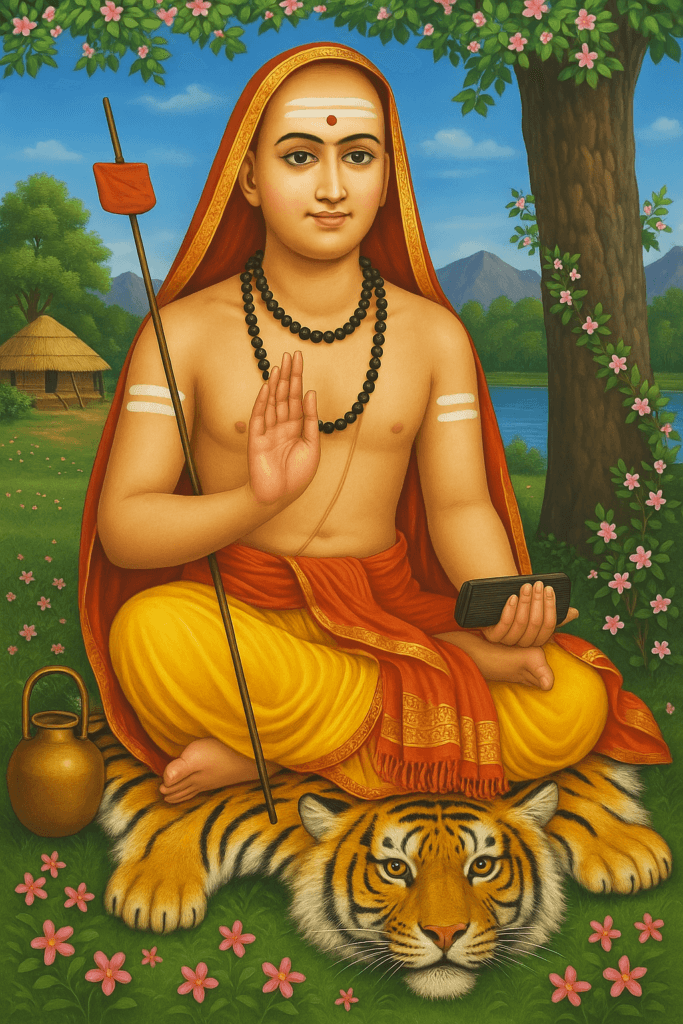
Conclusion
Thus we see that Akṣayyatṛtīyā holds profound significance in Hindu tradition, resonating across various scriptures such as Dharmasūtras, Itihāsas, and Purāṇas. These scriptures contain numerous references and narratives highlighting the auspiciousness of this occasion. While the dharma śāstras emphasize the importance of charity, offerings to Śrī Mahāviṣṇu, and initiating positive endeavors on this day, respect for material wealth, particularly food grains, is intricately woven into many narratives associated with Akṣayyatṛtīyā, as evidenced by stories from the Mahābhārata and Śrīmad Bhāgavata Purāṇa.
Wishing everyone a blessed Akṣayyatṛtīyā and Paraśurāma Jayanti. 🙏🙏
